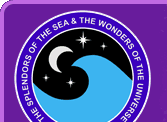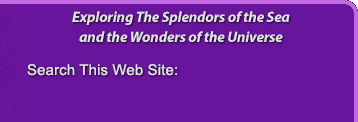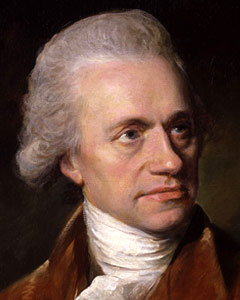
William Herschel
1738 - 1822
British astronomer, composer, and telescope builder.
Discovered the planet Uranus and two of its moons as well as two moons of Saturn.
Compiled a catalog of 2,500 deep sky objects that is still used today.
William Herschel was born on November 15, 1738 in the electorate of Hanover in what is now Germany. His full name was Friedrich Wilhelm Herschel, and he was one of ten children born to Isaac Herschel and Anna Ilse Moritzen. Herschel's father was a musician in the Hanover Military Band. Herschel played the oboe in the same band as a child. In 1957, his family moved to England after the French occupation of Hanover. While in England he went by the English version of his name, Frederick William Herschel. During this time, Herschel earned a living by teaching music. He moved to Sunderland in 1761 and accepted a position as first violin and soloist for the Newcastle orchestra. His first big break in music came in 1766 when he was appointment as organist to the Octagon chapel in Bath. At that time, Bath was a resort for the wealthy and fashionable. Herschel composed a number of musical works, including 24 symphonies and several concertos. In 1772, His sister Caroline moved to England and worked on several musical projects with her brother.
Herschel's interest in music eventually led him to discover mathematics and the science of optics. While reading Robert Smith’s Harmonics, he discovered Smith’s other works including A Compleat System of Opticks. At this time he learned the techniques of telescope construction. His interest in astronomy took a turn when he met English Astronomer Royal Nevil Maskelyne. Herschel eventually started building his own telescopes and would spend many hours each day grinding and polishing mirrors. He also made his own eyepieces with a magnification power of over 6,000 times. He used his telescopes to observe the planets and the stars. His home-built telescopes were known for their exceptional quality and in March of 1774 he began keeping an astronomical journal to record his findings.
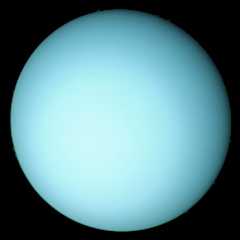
Herschel continued to study the night sky and on March 13, 1781, he discovered a small object that appeared to be moving slowly across the sky. He initially thought the object was a comet, but further observation revealed it to be a planet. He had discovered the planet Uranus at the outer reaches of the Solar System. It was the first planet to be discovered since prehistoric times. The discovery made him famous and earned him the respect of prestigious organizations. The Royal Society of London awarded him the Copley Medal for his discovery of Uranus and elected him a Fellow. He was also appointed as an astronomer to King George III and moved to Datchet, near Windsor Castle. At this time he decided to end his career in music and devote his time to astronomy. He continued his work as a telescope maker and achieved an international reputation for manufacturing quality instruments. Herschel sold over 60 reflecting telescopes to customers in England and abroad. He was eventually elected a member of the prestigious Royal Society where he received a copy of Charles Messier's Catalog of Nebulae and Star Clusters. Messier's catalog provided Herschel with a starting point for observing these mysterious deep sky objects.
In 1783, Herschel started work on a sky survey. Working with his sister Caroline, he used his telescopes to study small patches of the night sky. His high quality instruments allowed him to examine nebulae with much more detail than Messier. At the time, the word nebula was used to describe fuzzy, luminous patches in the sky. In 1788, Herschel married the widow Mary Pitt. Their son, John, was born in 1792 and would eventually acquire his father's interest in astronomy. Over the next 20 years, Herschel observed over 2,400 new nebulae and star clusters and recorded them in The General Catalogue of Nebulae which was published in three volumes. The catalog was eventually enlarged and renamed the New General Catalogue. This catalog is still used and many deep sky objects are identified by their NGC numbers. Of the 7,840 objects in the catalog today, over 4,600 of them were discovered by Herschel and his son.
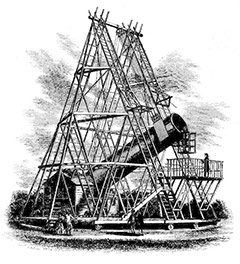
During his career, Herschel constructed more than four hundred telescopes. The largest and most famous of these was a reflecting telescope with a 49 1⁄2-inch diameter (1.26-meter) primary mirror and a 40-foot (12-meter) focal length. He also created a new telescope design by eliminating the small diagonal mirror of a standard reflector. His new design featured a tilted primary mirror that could be used to view an image directly. This design has come to be called the Herschelian telescope. Herschel's new telescope designs resulted in several new discoveries. In 1787, he discovered two moons around Uranus, Titania and Oberon. In 1789, using a larger telescope, he found Saturn's sixth and seventh moons, Enceladus and Mimas. There is even some evidence that Herschel might have discovered rings around the planet Uranus. Herschel also measured the axial tilt of Mars and discovered that the Martian ice caps changed size depending on the planet's seasons.
Herschel continued to make new astronomical discoveries in his later years. He studied the proper motion of stars and realized that the Solar System is moving through space. He also studied the structure of our own Milky Way galaxy and determined that it was shaped like a disk. He was also the first to use the word "asteroid" to describe the small bodies that are not planets. He discovered infrared radiation by passing light through a prism and measuring the temperature of the light just beyond the red end of the visible spectrum. In 1816, Herschel was made a Knight of the Royal Guelphic Order by the Prince Regent and was accorded the honorary title "Sir". In 1820, he was elected vice president of the newly formed Royal Astronomical Society and a year later, in 1820, he was elected president. His last published paper cataloged 145 double stars. Herschel died in England on August 25, 1822 at the age of 84. He is buried at St. Laurence's Church in Upton. He has received many posthumous honors over the years. Craters on the moon, Mars, and Mimas have been named after him. The asteroid 2000 Herschel bears his name, and the symbol for the planet Uranus features the capital letter H in his honor. His house at 19 New King Street in Bath, where he made his telescopes and discovered Uranus, is now home to the Herschel Museum of Astronomy.
